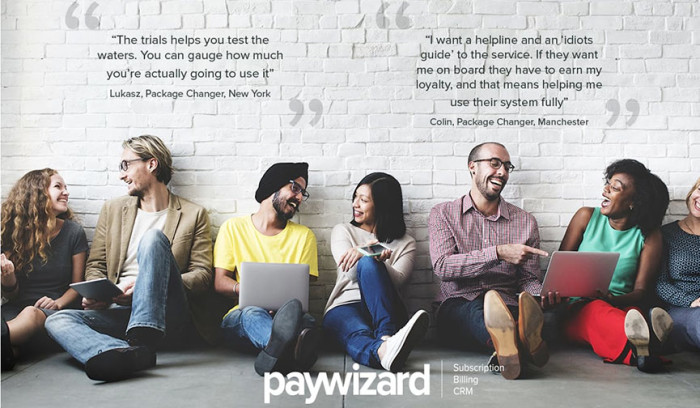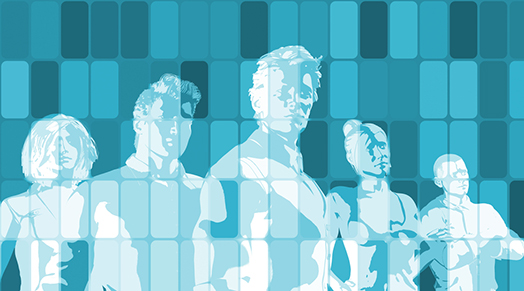Research into the TV subscriber’s journey has revealed that a business should maintain the human touch when interacting with both prospects and existing customers.
Bhavesh Vaghela tells how to put the ‘person’ into personalisation and cites the example of his pay-TV business, which has researched the advantages of human intervention as opposed to automated responses to enquiries.
In the age of instant digital communication and automated interaction, it is all too easy for companies to lose the person when they ‘personalise’ communications. While online capabilities have transformed the customer experience in terms of speed and simplicity, over-reliance on digital technology has come at a cost.
A recent Accenture report, Digital Disconnect in Customer Engagement, revealed a large number of companies are losing customers simply because they aren’t offering enough human-to-human interaction. Accenture’s global assessment of 11 industries found that 52% of consumers have switched providers in the past year due to poor customer service, with television service operators among the worst offenders.
 The logic behind the trend to full automation is understandable: it is cost effective and tends to suit the growing generation of tech-savvy millennials who seem to value immediacy above all else. However, in taking this approach, companies risk alienating those who require the human touch in at least some interactions with businesses. According to Accenture, 83% of consumers in the US prefer dealing with human beings rather than using digital channels to solve customer services issues.
The logic behind the trend to full automation is understandable: it is cost effective and tends to suit the growing generation of tech-savvy millennials who seem to value immediacy above all else. However, in taking this approach, companies risk alienating those who require the human touch in at least some interactions with businesses. According to Accenture, 83% of consumers in the US prefer dealing with human beings rather than using digital channels to solve customer services issues.
There are clearly people who demand that they be able to speak to someone, for many different reasons – and are often willing to reward those companies that do offer a more personal service. In the pay-TV industry, where my company operates, more needs to be done to ensure that TV providers are successfully balancing new technologies with a customer experience that builds consumer confidence.
Adding human interaction to personalisation
Adding human interaction back into the equation means factoring it into every stage of the TV subscriber journey, which recent Paywizard research has shown comprises eight key consumer ‘Decision Moments’:
- Find
- Join
- Consume
- Upgrade
- Downgrade
- Bill
- Leave
- Win Back
Here are some tips based on the research on how to ensure a business can maintain the human touch when interacting with both prospects and existing customers:
1 Get the channel mix right
Right from the start, the approach to attract potential customers can and should be conducted across multiple platforms. This multi-channel strategy can include geographic mass marketing and linear channels such as billboards and TV advertising, as well as targeted methods such as digital marketing, direct mail and telephone outreach to those showing an interest in your service.
Key is to use communication and marketing channels individual consumers want to use – understand what the options should be and empower them with choice. Critical to getting the mix right at the start is to not underestimate the power of non-digital channels when acquiring customers, starting with the the phone. Our experience in dealing with TV subscriptions has been that those converted via a phone call are more likely to be loyal to a brand. It may seem quaint to a digitally-focused brand aiming to hit millennials via social media, but the phone can still be a powerful marketing tool – even with younger consumers.
Although there are cost implications, many TV companies wrongly assume that digital-only customers provide the best margins. Many over-invest in online channels, often losing more profitable subscribers looking for a more comprehensive customer experience – which usually includes the ability to speak to someone when signing up, making a change, dealing with service issue, or even thinking moving to a competitor. The Paywizard research showed that customers felt live call centres available for pay-TV providers wrongly perceived to be pure online brands, such as Netflix, were key to keeping them on-board.
2 Understand who you are engaging
Real-time analysis of website visits or data collected from free trial offers can also provide valuable insights, as we found with subscription TV operators working to convert prospects and re-engage lapsed subscribers. Conversion can then be further driven through online communication tools, such as ‘web chat’ and ‘call me’ buttons, which can be activated through real-time web analytics. This technology has been adopted by many industries, but TV companies are proving slow on the uptake.
Real personal intervention can be a deciding factor, as we found with one TV operator that saw many potential customers hesitating to complete a purchase at the shopping cart phase of the process. However, by adding a pop-up web chat operator who could see the persons’ entire website journey, the operator was able to provide personalised interactions with these customers and reassure the customer to sign-up to the service.
3 Personal on-boarding assistance and an ‘idiot’s guide’ go a long way
Comprehensive prospect data from cookies, forms and other sources is game-changing. For instance, if analysis shows certain prospects visiting the price pages repeatedly, this could be an indication they are price-sensitive or don’t understand the structure of a pay-TV package. This is an opportunity for the operator to personalise the conversation, providing help and guidance. This customised level of service helps to build trust and provides a positive customer experience, making the consumer more likely to convert into a paying subscriber.
Consumer focus group research conducted by Decipher in collaboration with Paywizard, confirmed that both Britons and Americans value on-boarding assistance, but also highlighted that consumers want more guidance when getting acquainted with a service for the first time. As one participant said: “I want a helpline and an idiot’s guide to the service. If they want me on board, they have to earn my loyalty and that means helping me use their service fully.” What became clear in the research was that human interaction is not only vitally important in the ‘Find’ and ‘Join’ stages of the customer journey, but is equally essential throughout the entire TV subscriber lifecycle – something the pay-TV industry is struggling to come to grips with.
4 The human touch reassures customers, making them feel valued
From sorting technical issues that are hindering consumption, to resolving billing issues such as expired credit cards, having people on-hand to help is fundamental. This applies especially when customers are looking to make account changes such as upgrades and downgrades, or even cancelling. A real person can convince customers of the benefits of the service, or point them towards alternative options they might be unaware of, such as ‘freezing’ their account for a period of time. Whatever support they offer, a friendly and helpful interaction is a good experience, which makes customers more likely to come back.
The overall lesson here is businesses, whether in TV or any other industry, need to make sure they are aware of the demands of consumers and then make the most their technology and people to strengthen the customer experience. Most consumers want rapid responses as well as a combination of self-service functionality and human contact. The option to speak to real people is vital to the vast majority, yet technology will be increasingly important when it comes to personalising services and identifying what types of engagement need to happen at what time. Get it right and the result is stronger loyalty, increased revenues and better profitability.








Leave your thoughts